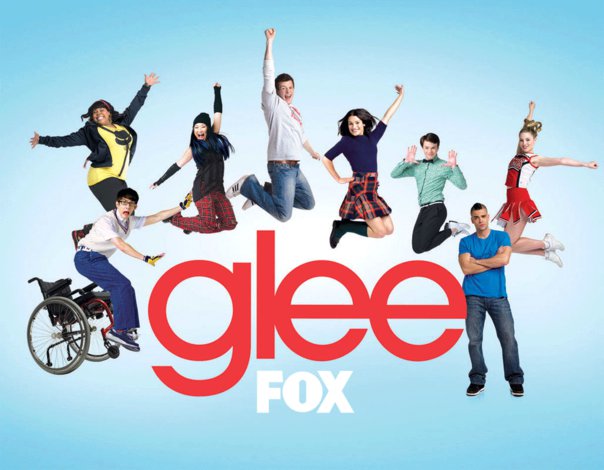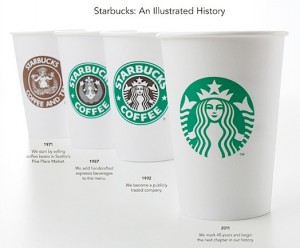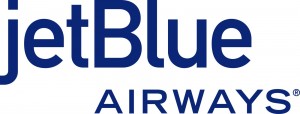So I was browsing through blogs and I came across Douglas Lam’s post about outdoor advertising. When we discussed this topic in class I was very intrigued by it cause I have rarely come across any interesting ones in real life. Here’s an example of a cool one I found on the internet.
Do You Have The Madness?
If you all don’t realize yet it’s March. March only means one thing and one thing only MARCH MADNESS!
As we all know, Youtube is an amazing branding tool and provides a unique way to differentiate yourselves from many other people searching to attain that goal. Simple STP if you think about it. But what if everyone is attempting to become that next sensation, the next “Beiber” for lack of better words. What ultimately needs to happen to get noticed? Simple, either target a different market or differentiate yourself enough.
When flying on an airplane their are many concerns to the consumer. These concerns mainly fall under about what am I getting from flying from a certain airline. Am I going to feel secure during my flight, are my baggage taken care of, will my flight be comfortable?
When I traveled to California just recently I decided to take the cheapest flight I could find and ended up on a JetBlue Aircraft. I wasn’t expecting much out of the flight because of the cheap fair but was pleasantly surprised in the amount of effort they put into their Product for a good Price.
Now that we are learning about the intricacies of the marketing mix more and more I have been noticing companies, such as JetBlue and there strategies in targeting their consumers. Here is a quick commercial that sums up a key part of who they’re:
As I mentioned earlier JetBlue is a very affordable alternative to other airlines but their low pricing isn’t deterring from the value. When looking at the pricing of JetBlue they seem to lean towards a more Sales and Customer Orientated strategy. This is resembled in the fact that they want to fill their airplanes with cheap prices and their ability to create a lasting impression on the customer through great service and extra perks like free satellite TV, unlimited snacks etc. This aim at creating a good impression on their consumers should give JetBlue an advantage where many other Airlines tend to falter.
As we have discussed in class most businesses have switched over to value-driven methods of providing there products. When I was on my trip to California I went to Six Flags Magic Mountain and saw what a company looked like who didn’t effectively value its services to it’s consumers.
Most People know that Six Flags Magic Mountain provides the largest array of thrill coasters in one park throughout the world. Six Flags as taken this approach to differentiate its theme park from all the others in the Southern California region (Disneyland, Universal Studios, Knotts Berry Farm, Seaworld). When you come to the park you don’t necessarily come for the environment (the presentation is lacking) but you come for the stomach churning and jaw-dropping feelings while riding the rides.

I have attended Six Flags twice in my lifetime and both experiences were quite different. I first attended Six Flags in January of 2008, it was a great experience because there was short lines, it was cheap and the rides were amazing. However, this time around my visit was sour.
The ride experience was the same (with a few additional gems) but one specific introduction got to me. In 2009, Six Flags introduced a mandatory locker policy. This really got to me because of the inconvenience it created to the consumer. It simply made it feel that they wanted to find any way possible to get money out of me and didn’t value me as a possible future consumer. When looking at theme parks most people attend them on vacations and rarely attend more than once. However, with this approach of mining money out of the consumers pockets is not value driven and will bite Six Flags in the near future despite this idea of only having a one time interaction with the consumer.
CD’s, Life Cycled Out?

As we were discussing the Product Life Cycle in the last class it got me to thinking about many products and what stage of this cycle they’re in. One product that came to mind instantly is the compact disc.
When I think of the compact disc it wasn’t too difficult to drop it into one of the four product life cycle categories. The CD itself exemplifies a product that is in decline. The characterisitcs of the decline stage is declining sales, decliining profits, few competitors and products and consumers who are behind the time and the CD fills all these criterion.
Breakdown of the CD:
- Sales/Profits-Declining
- Consumers-Most have moved on to MP3’s or other digital downloads
- Competitors-Most are moving on ways to digitally produce.
With the main reason the death of the CD is looming is advancing technology it makes me wonder how long until the next big thing comes along to take place of digital soundtracks (if there will be one).
Glee, Music Marketers Best Friend

Are you a self-proclaimed Gleek? I wouldn’t go out calling myself a Gleek but I definitely not denying that the show has me going along for the ride. No matter what category you fall into Glee is sure doing well with consistently high viewership by its multiple types of fans. But the show itself isn’t the success that I’m intrigued by, it is the ability to churn out chart topping covers (it is currently sitting #2 all time for most top 100 appearances on the .com 100, next to who else but Elvis Presley).
If you aren’t convinced that Glee and Cheesy Musicals are back in style, well you can be certain that Glee and Fox aren’t the only groups benefiting from its success. As we all know the Glee Cast, like any Glee Club, simply performs songs of other artists. The amazing thing is that once a Glee “Cover Version” of a song hits the tube not only sales of the Glee Composition occur but of the Original Artist as well.
Simply put Glee is a Social trend that has hit the music industry by storm. A prime example of how influential Glee is would be through the recent cover of Florence and the Machine’s Dog Days Are Over. I personally had never heard of them before Glee or heard them on the radio whatsoever. After the show aired I have heard the song ample amounts of times on The Peak, The Beat and The Zone.
My final thoughts are that Glee is helping artists in a big way and is a simple tool to reach a music lovers thoughts.
DJ’s Driving Sales
When you walk in to a store there are many factors that effect your purchasing choices; these including Psychological, Social and Situational factors. I have been noticing of late that most stores aimed at the younger demographics are implementing in store DJ’s. This specific target aims at both psychological and situational factors.
It is interesting to see such a simple tactic of introducing “hipper” music into stores to retain consumers attention. But what is the purpose actually doing?
Since this tactic is focused on affecting the image of the company it tends to shape the perception of the company itself. By providing hip music it makes the consumer who searches for a hip look values align with the company. It also is known that music can shape the temporal state of a consumer. By playing appealing music it helps shifts the consumers state of mind in to a position that will influence them to purchase.
But what does this say about DJ’s?
From my personal experience I have been turned off by the noisiness and chaos that DJ’s bring to the shopping environment. One thing is certain though with constantly changing demographics only time will tell if this new trend will influence consumer decisions.
NBA, Ads Aimed at Your Heartstrings
As I was browsing through some of the class blogs I came across Tim Tong’s blog and one specific post definitely caught my eye. His post on the NBA and there ads was what sparked my interest.
Like Tim I have a soft spot for the sport of basketball. Part of this comes from playing basketball throughout my high school career. However this also comes from the need for me to watch every high school, college and NBA game possible (see picture above, I’m the one leaning over on the left) and now the desire to keep my passion alive through coaching a Grade 8 boys team at Clayton Heights Secondary in Surrey.
But back to the important part, how does the NBA tap in to the market of such people as myself or just general sports fans to create active viewer ship. Tim stated that the NBA effectively created the “Where Amazing Happens” campaign which successfully increased the amount of active watchers of NBA games. When he mentioned this it made me think of the specific “There Can Only Be One” group of ads in this campaign. Here are a couple examples of a few:


He mentioned that these ads applied the affective component to attract consumers however these specific ads also factor in the cognitive component do to them aiming at raising its largest profit area, playoffs.
The way these ads address the affective component is through the rawness of the what the athletes are saying in the ads. Another factor would be because they show the superstar athletes, the ones that have the most inspirational or role model aspects. These two main aspects create an attachment by the watcher giving the attachment to the brand itself. For the cognitive component they address only the information that the consumer would need, when playoffs begin. Despite this tidbit of information being small it helps the consumer understand just what they need to know.
These ads do just what they need to do and it is proven through the statistical evidence from Tim’s Blog.
Starbucks, New Logo New Identity?
We are all acquainted with the Green Giant the proverbial Coffee Machine. When walking down the street and you can’t go a few minutes before seeing that very familiar Siren that we have grown to love. But as the 40th anniversary of this Coffee Company is around the corner it is announced that the familiar logo will be no more.

The main thought that is on everyone’s mind is why. Why would Starbucks adjust it’s brand positioning in the most influential possible via changing its complete image. I was browsing the reactions across the web and found this interesting blog which pinpoints Starbucks strategy behind it’s brand reposition.
The blog is by a guy named Nigel Hollis. He talks about how Starbucks new logo is trying to disassociate itself with the product Coffee. This is mainly because of their desire to expand into other products and services that aren’t solely coffee. An example would be the recent acquisition of Tazo Tea. Nigel does bring up a great point that arose from GAP’s attempt at re branding through logo change. People grew to GAP’s logo so much that they would solely buy products because of the brand itself. In other words the brand added value to the products that were underestimated.
Now what does this say about Starbucks? What will happen to its consumers as it attempts to target a new market or enhance it’s ability to expand into other areas? What will removing coffee as the emphasis for the company have in the long run on its competitive advantage?
All these questions will be answered all we have right now is both the good and bad reactions to such a change but only time will tell if the re-brand will benefit the company.




